Old Sun Chapel
This computer reconstruction approximates how the chapel at Old Sun would have appeared at Old Sun Indian Residential School. It was created using historic photos as well as descriptions provided by former students.
“We instill within them a pronounced distaste of the Indian way of life so that they will be humiliated when reminded of their origin. When they graduate from our institutions, the children have lost everything except their Native blood”. – Bishop Vital Grandin, 1875
3D Computer Reconstruction of Old Sun’s Chapel
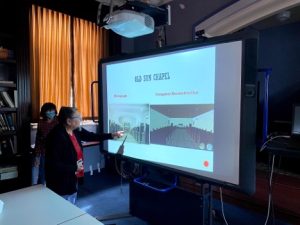
Computer science researcher Dr. Katayoon Etemad used historic photographs and survivors accounts to recreate the appearance of the chapel during the 1960’s. Etemad would provide members of the Old Sun Advisory Group with different versions of the model. Members would then suggest changes and send the model back to Etemad for revisions. This “back and forth” process eventually resulted in a closer approximation of how the chapel would have looked to staff and students.
The Prevalence of Religion at Indian Residential Schools
Residential School Survivors describe being indoctrinated with religion, being punished for speaking their language, and being mocked for practicing their culture. Felix Mukego who attended BQ IRS explained: “they try to indoctrinate you with religion. Pound in you a fear of God or whatever God is supposed to be. Made you pray maybe 7 times a day. Made you go to church every morning, whether you like it or not. On your hands and knees. On a cold cement floor to say your Catholic prayers” (Muskego, 2014).
This image gallery shows historic and modern photos of Old Sun College's library. Click on photos to expand and read their captions. If you have photos of that you would like to submit to this archive, please contact us at irsdocumentationproject@gmail.com.
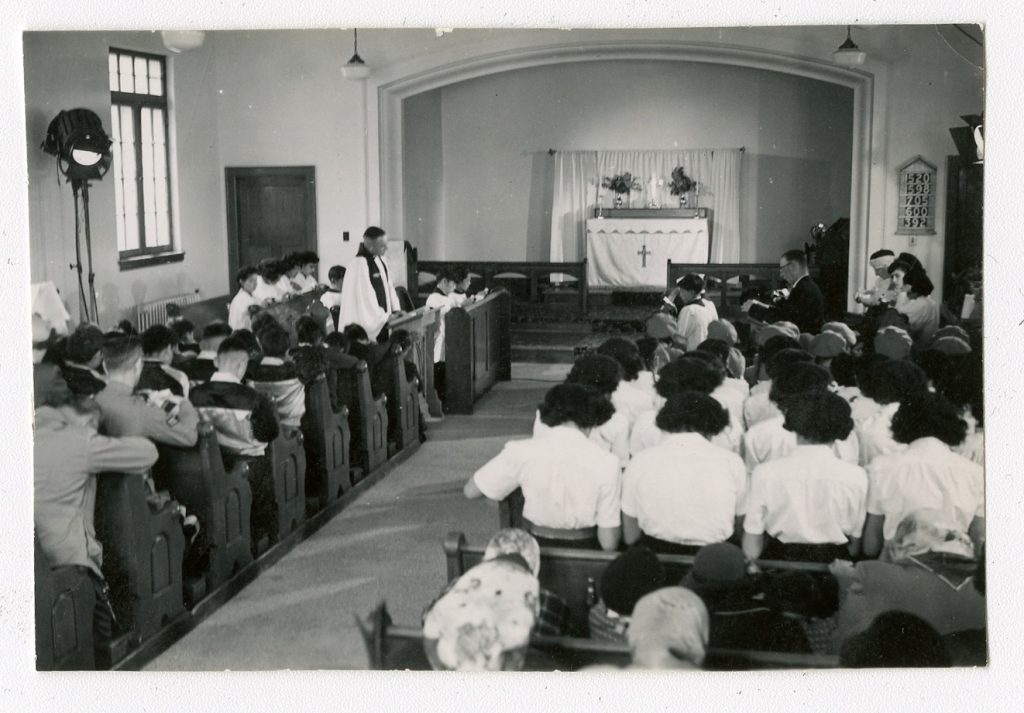
![Canon Gibbon Stocken conducting service at Old Sun School. - [ca. 1949]. P75-103-S7-198 from The General Synod Archives, Anglican Church of Canada](https://irs.preserve.ucalgary.ca/wp-content/uploads/P75-103-S7-198.jpeg)
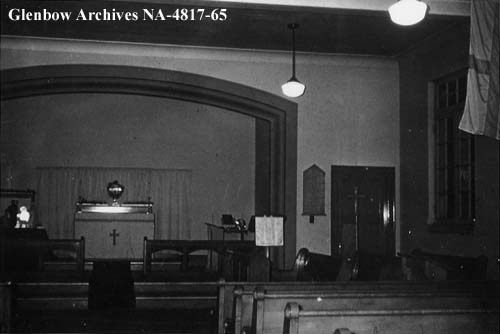
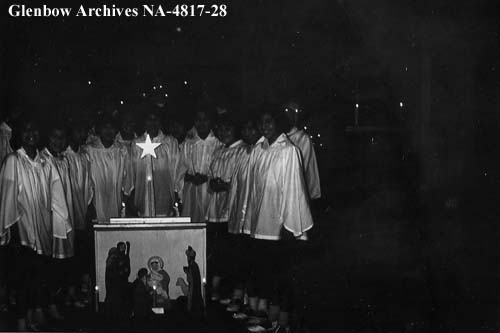
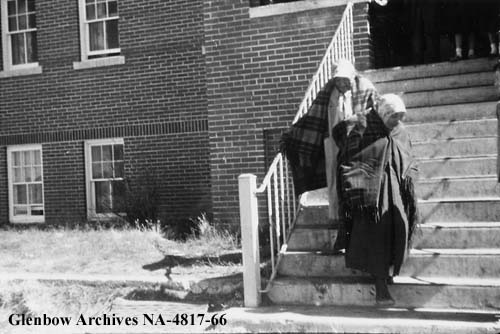
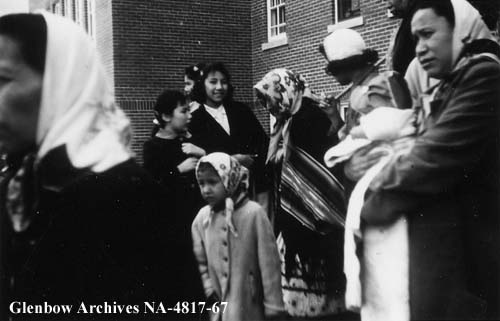
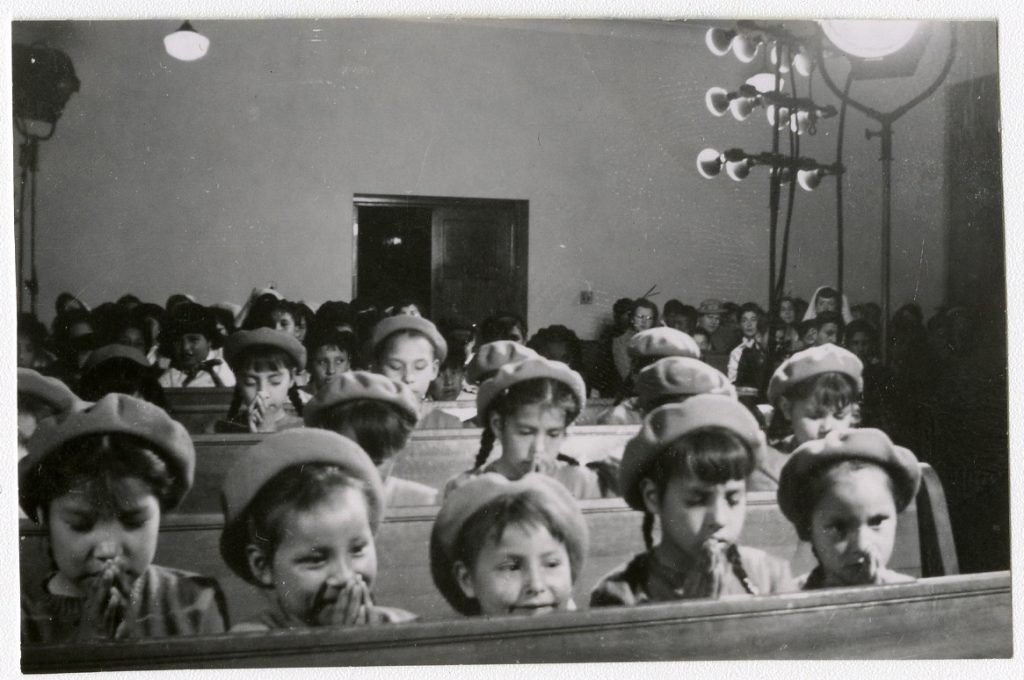

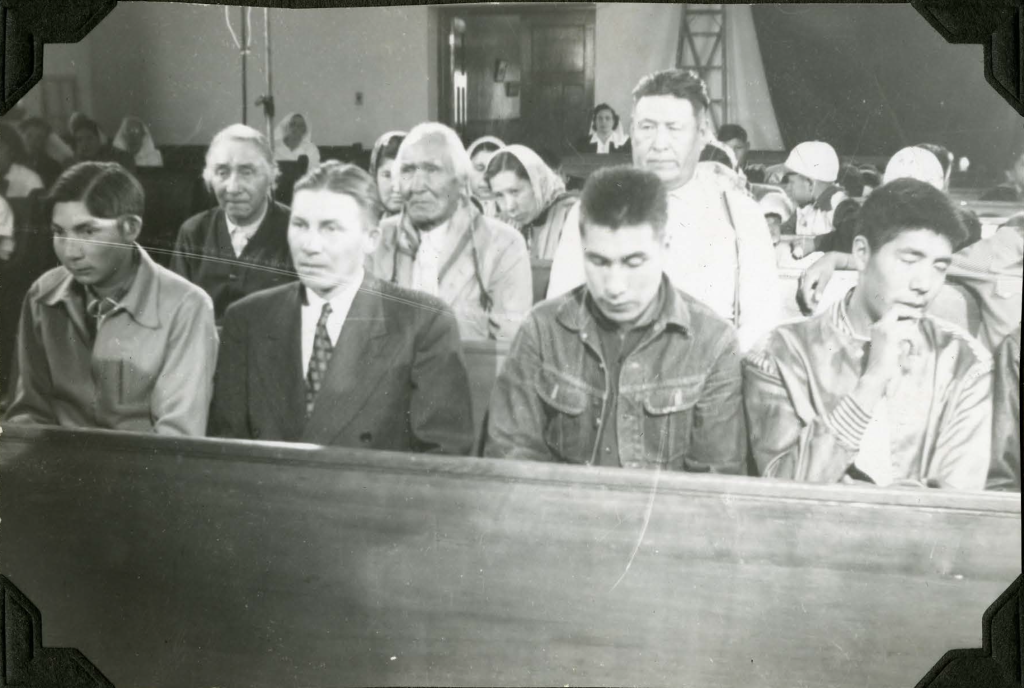
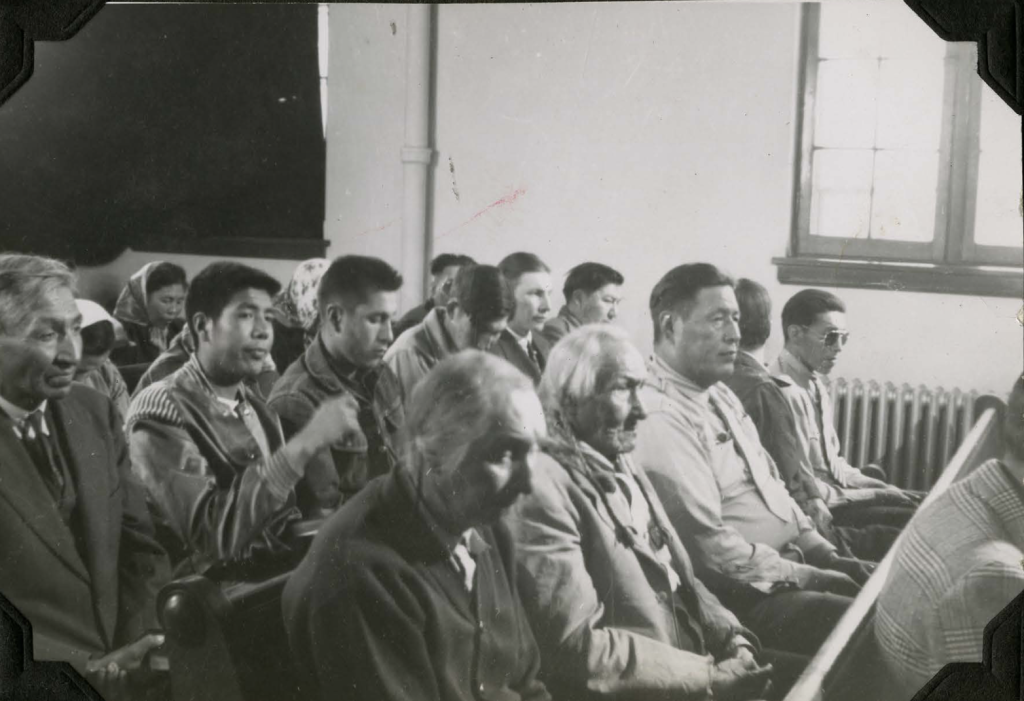

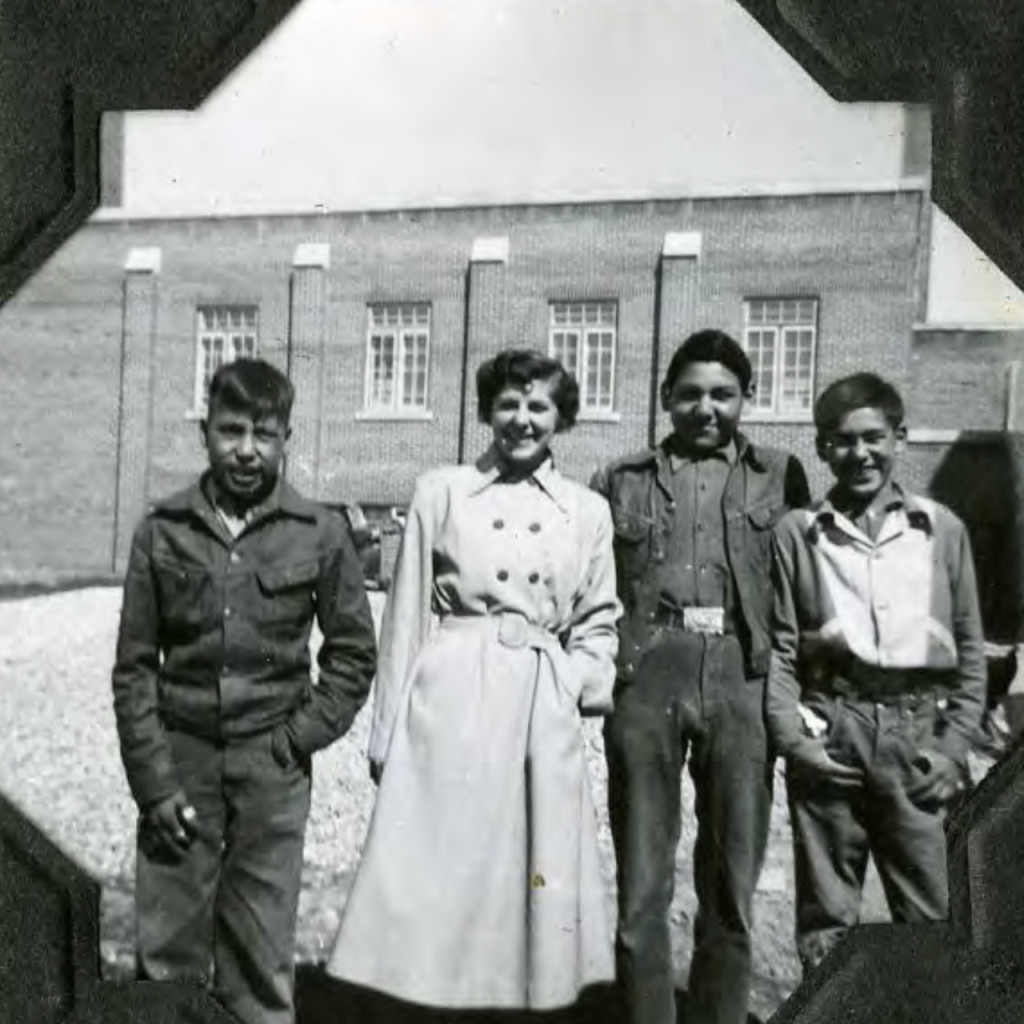
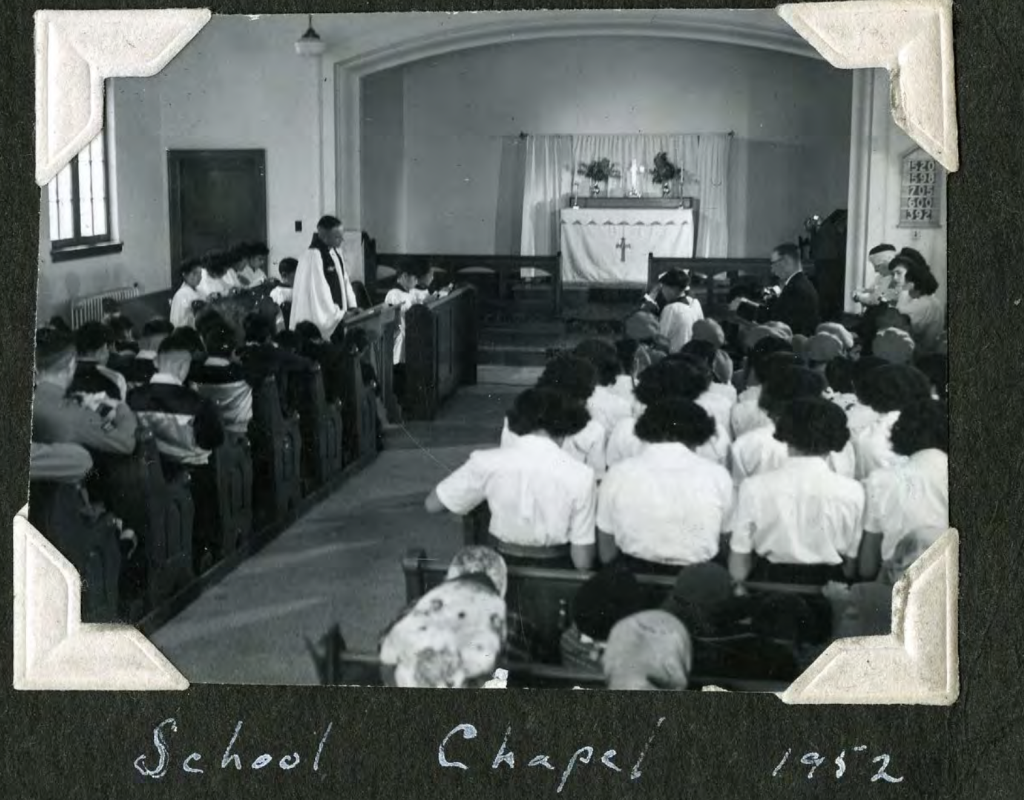
![Canon Gibbon Stocken and Chief Paul Little Walker at the front of Old Sun chapel [ca. 1949]. P75-103-S7-197 from The General Synod Archives, Anglican Church of Canada](https://irs.preserve.ucalgary.ca/wp-content/uploads/2021/07/P75-103-S7-197.jpeg)
Irwin Big Old Man- On Our Knees for Half a Night
My name is Irwin Big Old Man, I was stationed… not stationed, I was locked up in Old Sun Residential School, and I stayed in the boy’s room. But now the junior boy’s room is a good room. It is a science room where they are teaching Health. And anyways there when I first came, my bed was right beside the supervisor’s room and I was a brat and I was always getting yelled at. I was always on my knees beside my bed.
The following years they took me away from the supervisor’s room, close to her bedroom. They put me by the emergency exit, which was a lot better and quieter so. I never really seen or experienced anything bad in there. One night we all had a big pillow fight, everybody in there. We all got caught and the supervisor, do we go with names or no? Anyways the lady, Miss Bolton, she made us stand on our, I mean kneel down, on our knees for a good half of the night. The guys were passing out and a lot of us guys the next day couldn’t even walk because of the cement floor and being on the knees and what not.
For that the Junior boy’s room was never really see anything. But the bad part was downstairs in the rec room the junior boy’s rec room downstairs, down, I don’t know what’s in there but that’s the shower room, bathroom and everything by the dining room. That’s where everything we see, like the older guys would encourage, made, the little guys to beat each other up. The supervisors they never did nothing. They just sit back and watched and they actually cheered us on.
-Irwin Big Old Man
Notes:
Oral interview with Irwin Big Old Man. Conducted, translated, and transcribed by Angeline Ayoungman. Old Sun Community College, March 28, 2022.
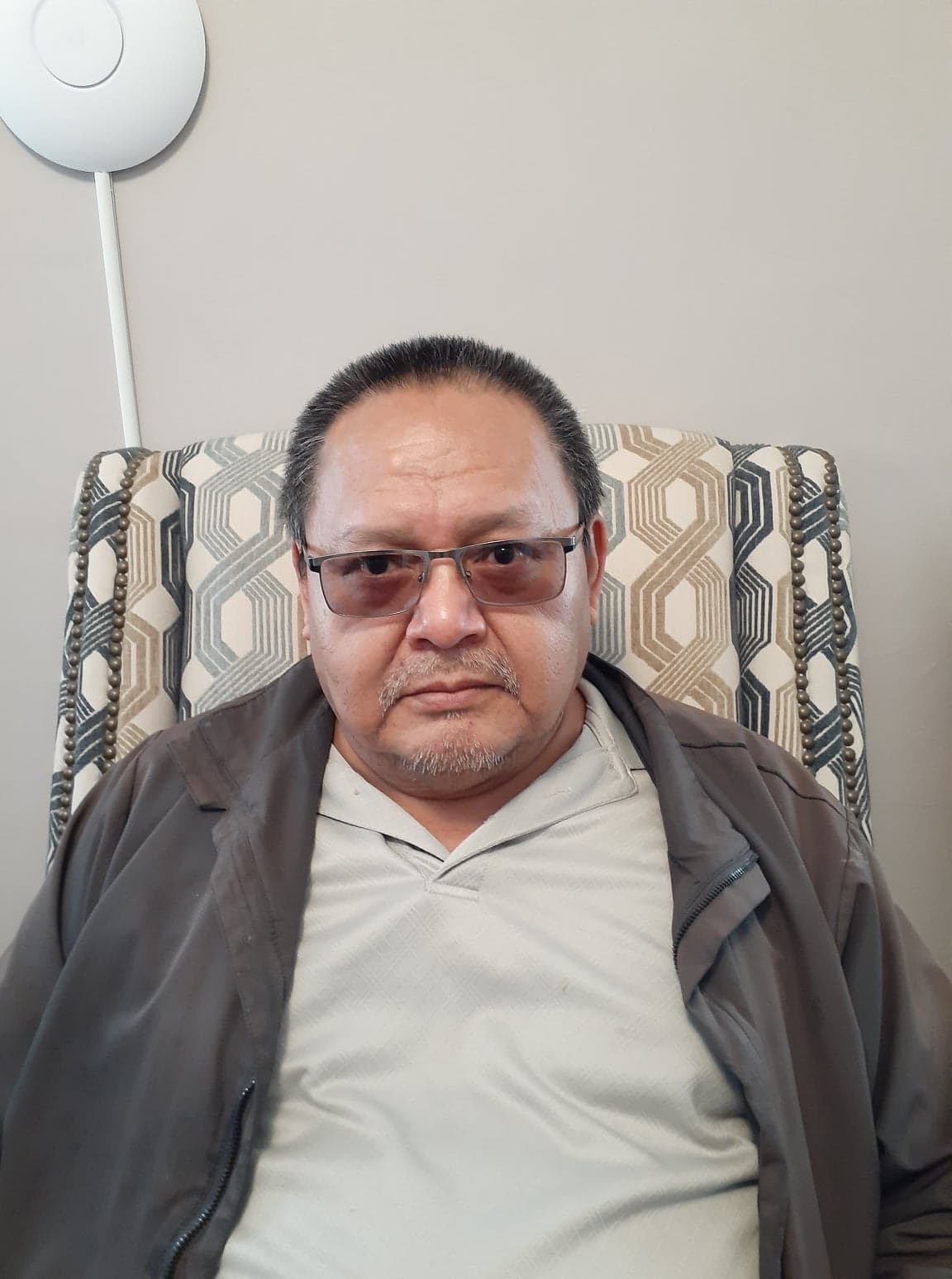
Explore Floors and Rooms
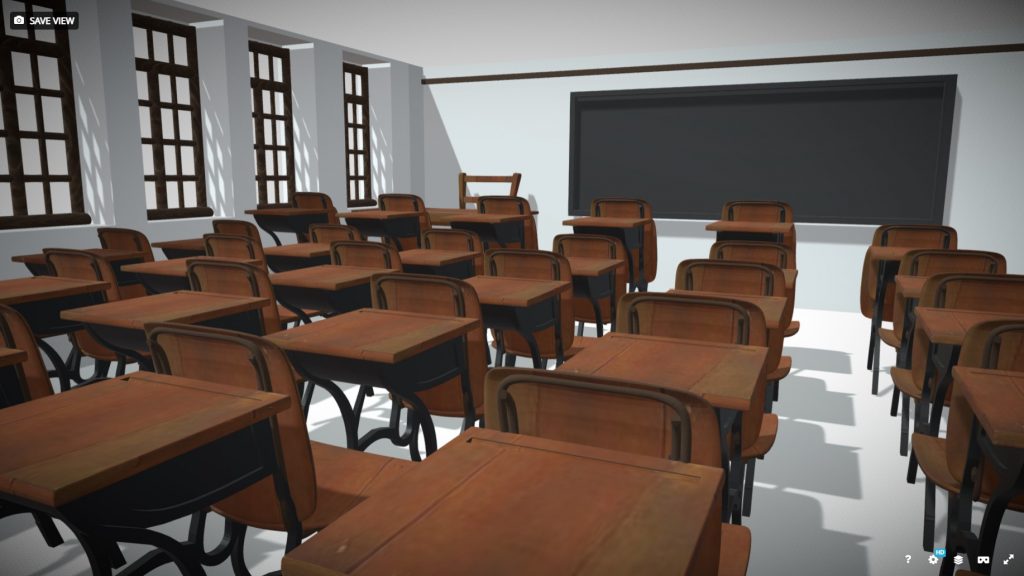
Old Sun Classroom
This computer reconstruction approximates how clas…
Read more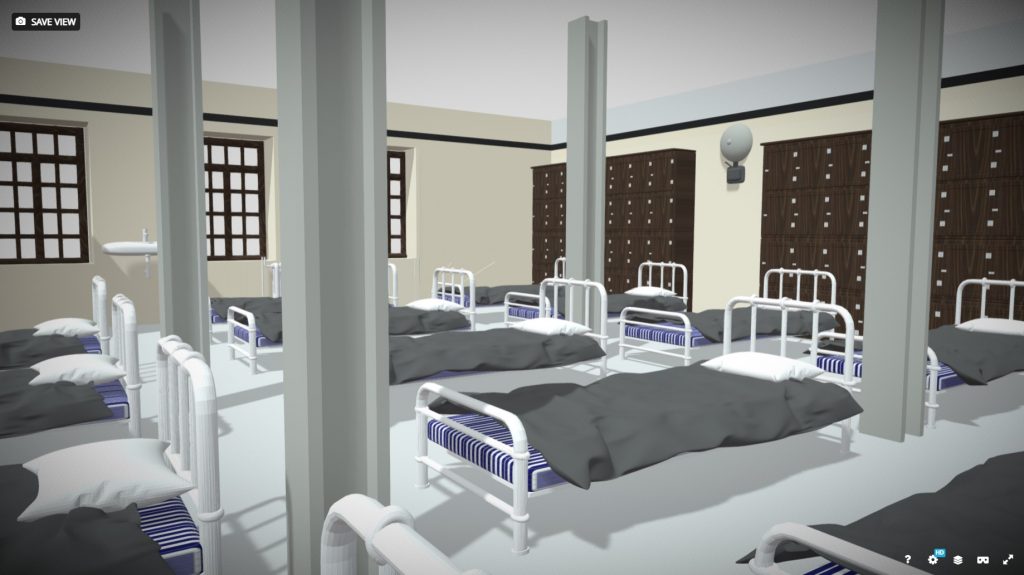
Old Sun Junior Dormitories
This computer reconstruction approximates how the…
Read more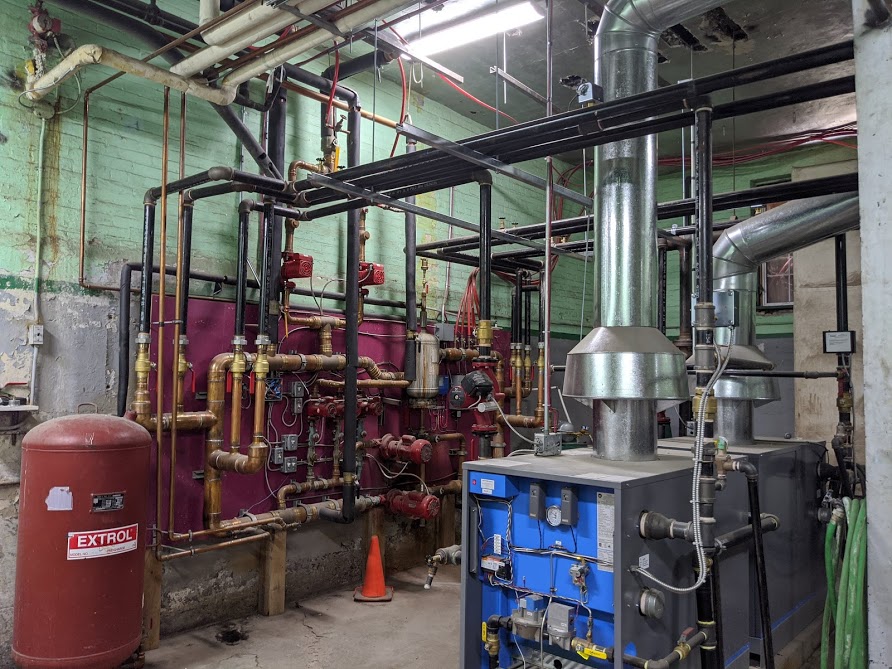
Old Sun Boiler Room
The boiler room and former coal shoot at Old Sun C…
Read more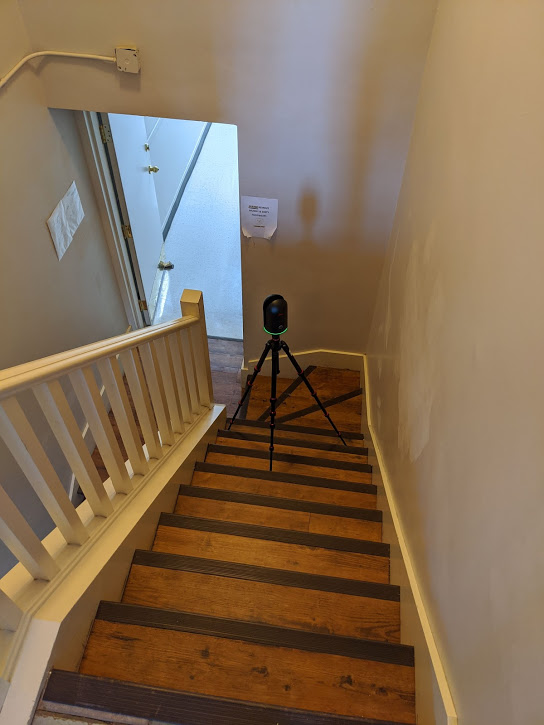
Old Sun Annex
The Annex at Old Sun Community College. This Area…
Read more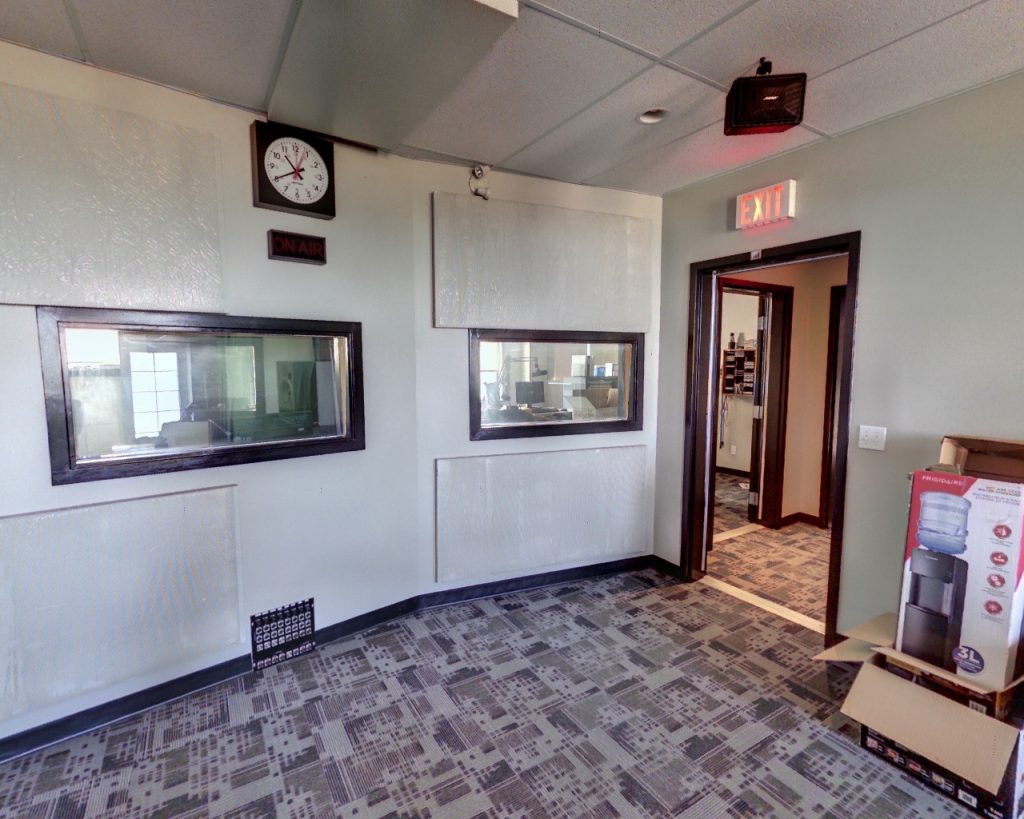
Old Sun Community College Fourth Floor
The Fourth Floor of Old Sun Community College (OSC…
Read more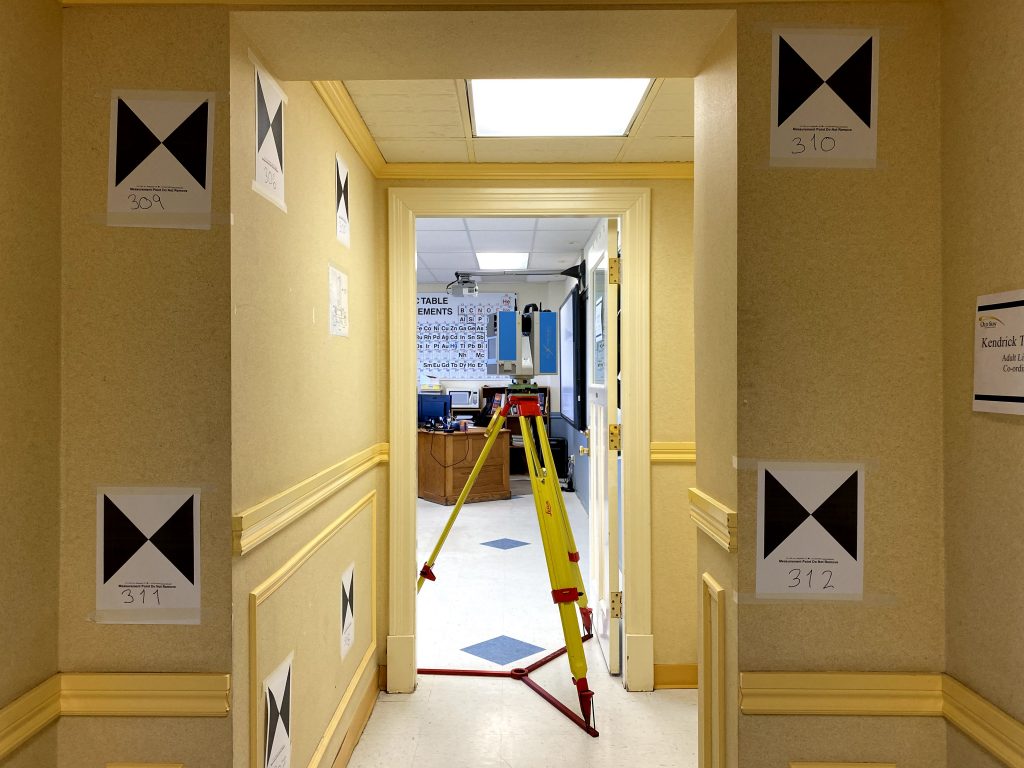
Old Sun Community College Third Floor
The Third Floor of Old Sun Community College (OSCC…
Read more
Old Sun Community College Second Floor
The Second Floor of Old Sun Community College (OSC…
Read more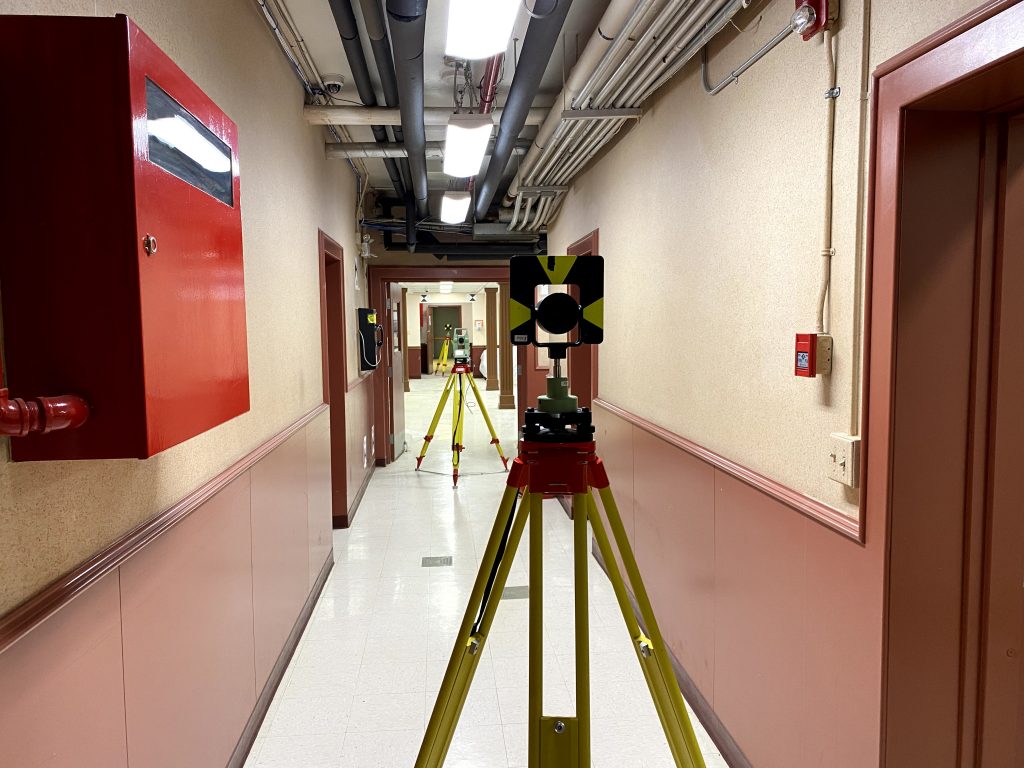
Old Sun Community College First Floor
The First Floor/Basement of Old Sun Community Coll…
Read more
Exterior of Old Sun Community College
Old Sun Indian Residential School operated between…
Read more
